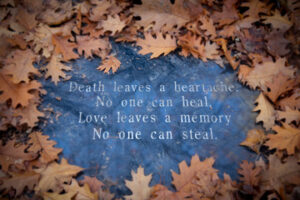She was a young woman, probably in her early twenties. I encountered her in a morgue where I had gone to see the body of one of a patient who died the previous week, in order to fill out some legally required documents about the death. She was the apprentice, sitting in for the technician on duty who was on his lunch break. I was surprised that she was comfortable by herself, among all the dead bodies. And morgues are lonely (and cold) places….
So, I asked her, “where is Mr A?” “It’s his lunch break, and he’s gone to see the Hospital Director about some matter.” “And you are here by yourself?”
“Yes.”
“You’re not afraid?”
“You mean of the bodies here?”
“Yes.”
“No, I’m not. Why should I be? Dead people don’t hurt you; only the living do.”
She did not realise how profound her statement was. She said it so spontaneously and matter-of-factly that I felt she had recently experienced what she said. But I didn’t pursue the matter as I had only just met her. But it set me thinking. Is it true that dead people don’t hurt us? What causes fear?
She was right that dead people generally don’t hurt us unless there had been some unpleasant and unresolved issues between us and them before they died. In crime and its detection, dead people can leave clues that can be used to track down criminals including their murderers. Criminals don’t mean to leave clues, but they do! And clever detectives can use such to track them down and get them to pay judicially for their crime.
The causes of fear somehow boil down to three main categories: the painful and dangerous, the unknown, and any previous experiences of the painful and dangerous. Fear has often been graded in ascending order of worry, anxiety, dread, terror and panic. This can be helpful when analysing the subject, but not necessarily during the actual fearful encounter. The reaction of the fearful person can go very rapidly from worry to panic almost instantaneously as these stages can often seem to run into themselves. The highest levels are often accompanied with paralysis of thought and action making the fearful person unable to take any rational action. How does the body put us in this state?
We can deal with the dangerous we know about by anticipation and preparation. Studies have shown that painful experiences are not that frightening or fearful if we know about them beforehand. The fear of the unknown is the real problem as it raises our level of anxiety, and this can be worsened by any previous experiences the brain recollects. These flash through the mind at a potentially dangerous encounter and set the scene for the imagination to run wild and cause panic. The body stores these memories in a special part of the brain (the amygdala).  In experiments with animals, when they are subjected to pain or unpleasant stimulus like an electric shock to the foot, accompanied by a sound, they react by withdrawing the foot. As time goes on, the animal associates the pain of the shock with the sound and later will respond to the sound alone in the same way, even when not accompanied by any pain or shock.
In experiments with animals, when they are subjected to pain or unpleasant stimulus like an electric shock to the foot, accompanied by a sound, they react by withdrawing the foot. As time goes on, the animal associates the pain of the shock with the sound and later will respond to the sound alone in the same way, even when not accompanied by any pain or shock.
The brain remembers our fearful experiences in a similar way, hence sometimes we can feel fearful in situations that our brains associate with a previous fearful experience. The amygdala produces chemical substances that affect other parts of the brain and body, which prepare the animal to respond to the fear which it perceives as threatening its very survival. The preparations include among other things, increasing breathing, making the heart beat stronger and faster, reducing saliva in the mouth thus causing dryness of the mouth, tightening the muscles, and getting the person ready to fight or flee. The mind is then engulfed in the emotion and thinking is suspended. This is the so called ‘fight or flight’ reaction. In extreme cases the person can neither think nor move – they are literally paralysed by fear.
In my childhood, my family lived in church compounds which were usually associated with church cemeteries. It was generally believed by many people that ghosts of dead people came out about noon each day, and if you walked past the cemetery, you could see them. But you had to do a certain manoeuvre – bend down with your legs apart and look through the space between your legs. The ghosts were supposed to look human, but with wizened hair, and no legs. They were vicious and if you bumped into them, they could harm or kill you. For this reason, whenever my fellow school pupils came near the church compound, they would hold firmly to their satchels, and run full speed till they were clear of the cemetery environs. My school mates were surprised that my siblings and I were not afraid of ghosts. We knew by experience that the stories about ghosts were just products of people’s imagination.
Fear can be anticipated by preparation in the same way that we prepare for emergencies by doing fire drills, first aid, and cardio-pulmonary resuscitation (CPR). Simple exercises like writing down what can happen and what to do in different scenarios of the potential danger can often be effective in reducing the emotion. There are other aspects of fear, of course, but their exploration is beyond the scope of this piece.